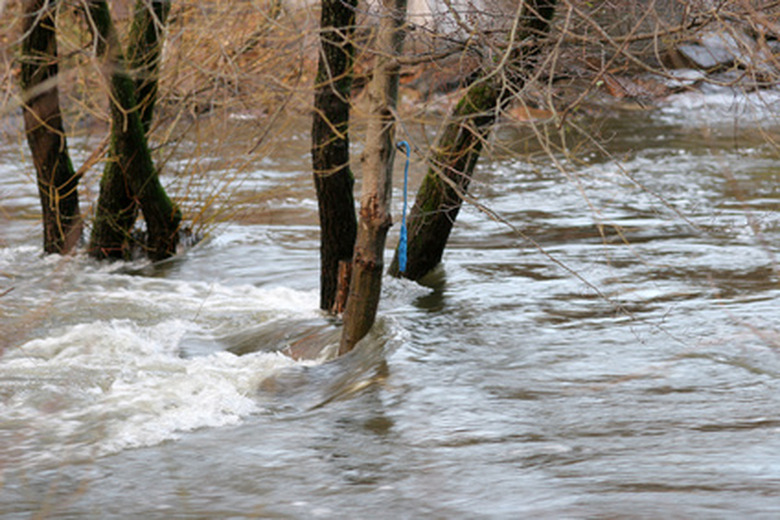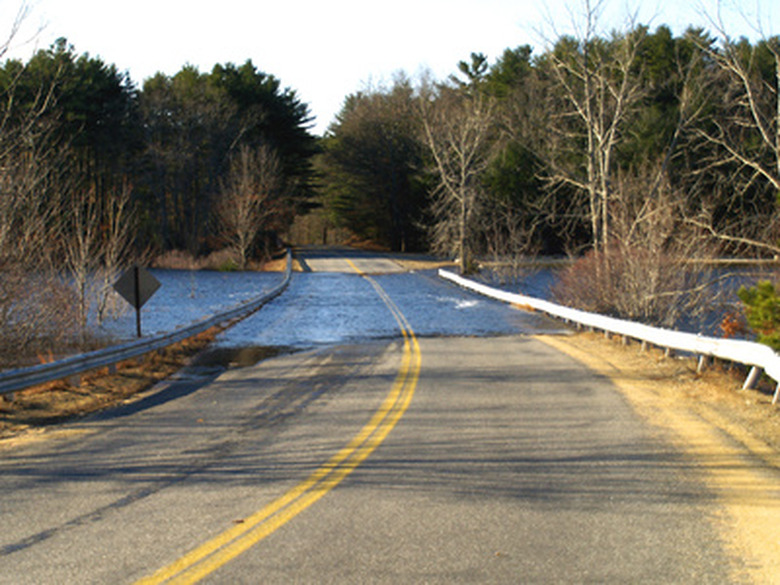Definition Of A Seasonal High Water Table
Any homeowner who has experienced a flooded basement during spring rains knows something about the seasonal high water table. A water table level is dependent upon site-specific factors like precipitation rates, soil permeability, geological formations, drainage patterns and proximity to nearby surface water bodies.
Precipitation
Precipitation
Precipitation increases in winter, and in spring rain water and melting snow percolate through soil, increasing groundwater volumes below the surface and raising the water table level. The water table level represents the point at which atmospheric and water pressure are equal over a period of time. With seasonal fluctuations, the water table level can rise into saturation zones.
Soil Permeability
Soil Permeability
Besides precipitation, the type of soil above the groundwater aquifers affects the seasonal high water table. Highly permeable sandy soils increase the amount of water that reaches the aquifer, increasing volumes and raising water table levels. Highly compacted soils thwart percolation and water runs off the surface into nearby drains or surface water bodies.
Determining Seasonal High Water Table Levels
Determining Seasonal High Water Table Levels
Most states regulate septic system placement to protect groundwater supplies from sewage contamination. For this reason, many homeowners must determine the seasonal high table level on their properties. Soil borings are generally taken to examine soil characteristics, like color and particle size, to identify its ability to drain water and to see at what level water has risen, or saturated the soil, in the past.
Septic Systems
Septic Systems
Generally, regulators require at least 3 feet of an adequate filtrating soil layer between a septic system and the seasonal high water table level. This purification layer is designed to protect groundwater supplies from sewage contamination that can include pharmaceuticals flushed down the toilet or residual fecal waste. Hydraulic designs of septic systems must predict the seasonal high water level table to determine where the septic tank and absorption field will be placed. This is usually done through soil boring samples and hydrogeologic analyses.
Flooding
Flooding
Water table levels are directly affected by seasonal precipitation variations. Unpredictably stormy winters or one intense precipitation event can raise the water table levels, which, in combination with swollen surface water bodies, results in flooding. Some flooding can be avoided through sump pumps or redirecting drainage systems away from buildings, but data about seasonal high water table levels are necessary for proper designs.
Cite This Article
MLA
, Diane Bacher. "Definition Of A Seasonal High Water Table" sciencing.com, https://www.sciencing.com/definition-seasonal-high-water-table-6551159/. 22 November 2019.
APA
, Diane Bacher. (2019, November 22). Definition Of A Seasonal High Water Table. sciencing.com. Retrieved from https://www.sciencing.com/definition-seasonal-high-water-table-6551159/
Chicago
, Diane Bacher. Definition Of A Seasonal High Water Table last modified March 24, 2022. https://www.sciencing.com/definition-seasonal-high-water-table-6551159/

